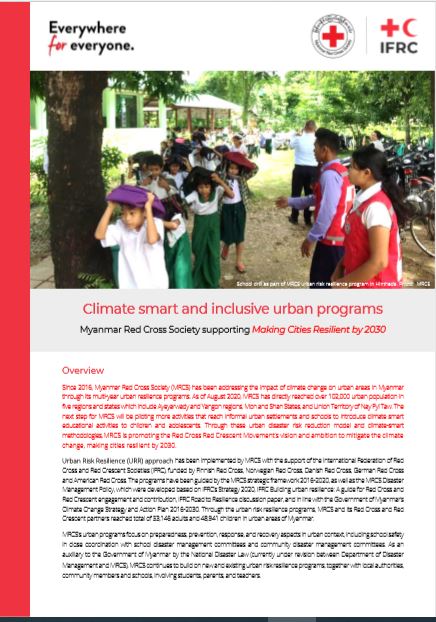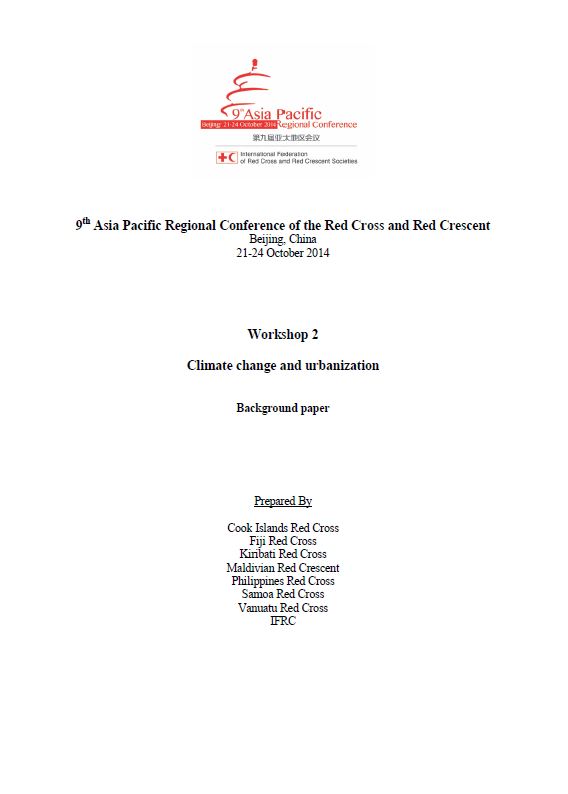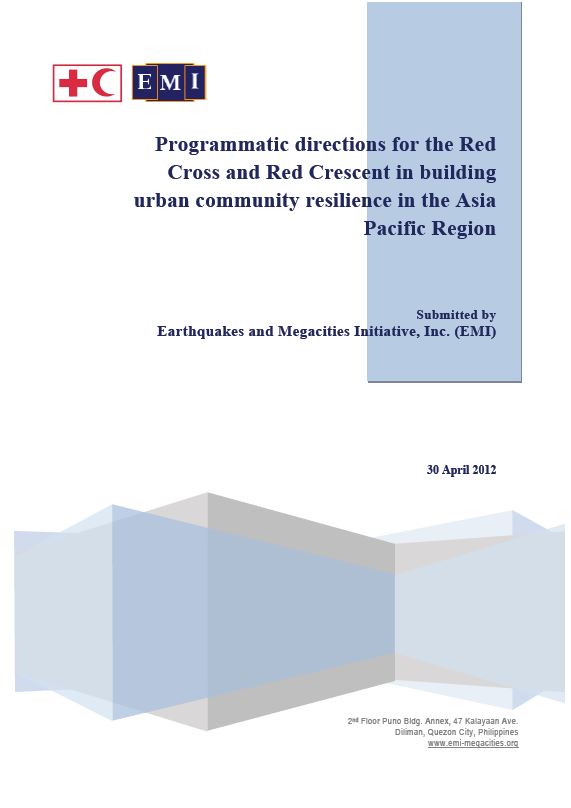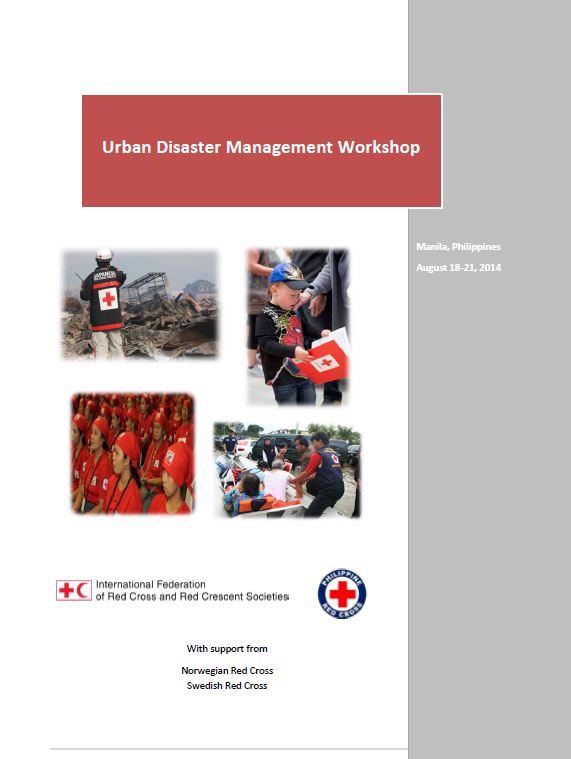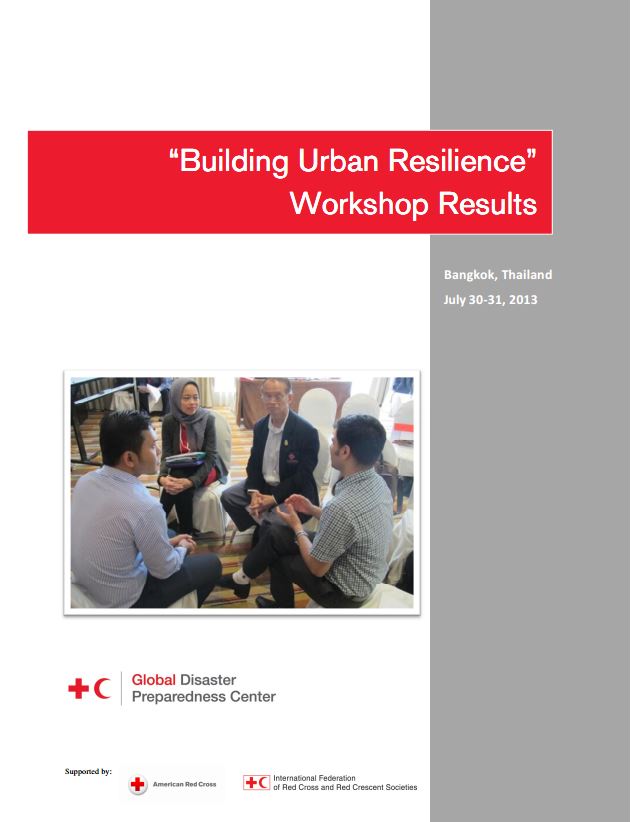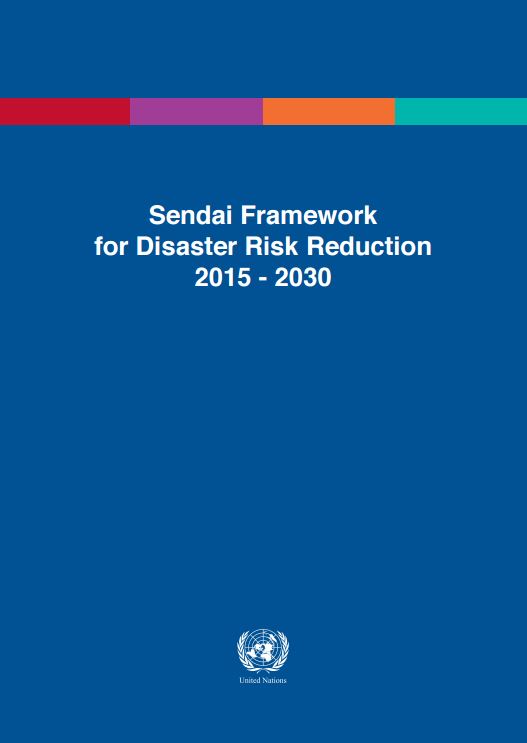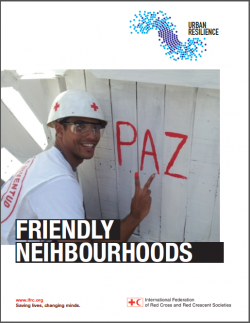How To Make Cities More Resilient: A Handbook for Local Government Leaders
Purpose
This Handbook for Local Government Leaders provides mayors, governors, councillors and others with a generic framework for risk reduction and points to good practices and tools that are already being applied in different cities for that purpose. It responds to the following key questions: WHY building disaster resilience is beneficial; WHAT kind of strategies and actions are required; and HOW to go about the task. Because cities, towns and municipalities differ in size, social, economic and cultural profiles and exposure to risk, each one will approach the tasks differently.
The message is: resilience and disaster risk reduction must be part of urban design and strategies to achieve sustainable development. They require strong alliances and broad participation. Applying the guiding principles of the “Making Cities Resilient” Campaign and the information in this Handbook will help cities and local governments to share learning, access information, develop indicators and performance measures and track progress.
Usage: Guideline for implementation
Audience: Local government leaders such as mayors, governors and councillors
![]()
Climate change and urbanization – Background paper, prepared for 9th Asia Pacific Regional Conference of the Red Cross and Red Crescent, Beijing, China, 2014
Purpose:
The background paper seeks to inform the position of the IFRC on the key priority areas of intervention in the coming years in the field of climate change and urbanization to ensure that future evolving risks are effectively integrated into resilience building activities.
The paper was prepared for 9th Asia Pacific Regional Conference of the Red Cross and Red Crescent, Beijing, China, 2014.
Overview:
The document outlines:
- Brief description of the background to this issue in the International Federation
- Current situation/activities of the National Societies in respect to the topic
- Strengths, Weaknesses, Opportunities, Threats analysis from National societies on the issue
- Reflections and lessons learned
- Looking into the Future
Usage: Policy reference
Audience: National Society Leaders and Managers
![]()
Programmatic directions for the Red Cross and Red Crescent in building urban community resilience in the Asia Pacific Region
Purpose:
This report is submitted following the contractual obligations of EMI to the IFRC Asia Pacific Zone for the project titled “Research Study to Identify Red Cross and Red Crescent Niche in Urban Community Resilience Programming in Asia Pacific.”
It presents the results of EMI’s analytical study and provides guidance to IFRC in determining its role in urban disaster risk reduction. It also provides additional information, materials, tools, methodologies and approaches that can be included in the existing Federation DRR and response materials/tools and highlights areas that require amendment to suit the urban context.
Overview:
The study identified four key issues that characterise existing RCRC programmes and activities in urban areas:
- Most of the DRR programmes and approaches have been designed for rural communities or adapted from rural experiences.
- There is limited experience in establishing systematic processes that access, gather and integrate information on city-level hazard, vulnerability and risk into programmes and policy formulation.
- National Societies lack adequate experience in working with local authorities, professional organisations, private sector, academia, and other local urban actors. They are also not integrated and active in global urban DRR/CCA initiatives.
- IFRC guidelines, training materials and manuals have been mostly designed for rural communities and National Societies face difficulties in adapting them to their national/local contexts.
Below is the proposition made by the study on several strategies to addres the gaps identified and build on RCRC strength and capabilities (for more information, see Executive Summary of the report, p. vi).
Usage: Policy reference
Audience: National Society leaders and managers
See also: The inception report of this research study [pdf, 0.83 MB]
![]()
Urban Disaster Management Workshop Report 2014
Purpose:
The report summarizes the workshop result of the Urban Disaster Management, by highlighting the workshop key messages.
Overview of the workshop:
The Urban Disaster Management workshop organized by Philippine Red Cross and IFRC, with the support of Norwegian Red Cross and Swedish Red Cross on 18-21 August 2014, in Manila, the Philippines, was a direct response to the many voices raised by National Societies to address urban Disaster Management issues with a progressive strategic and operational approach to urban preparedness, response and recovery.
The workshop brought together representatives from 15 National Societies from Asia-Pacific region, in addition to Partner National Societies, IFRC Secretariat, the ICRC, a range of representatives from Government authorities, UN, NGOs, academic and private institutions.
Objectives of the workshop:
- Increase knowledge on emerging urban Disaster Management issues & sharing of National Societies good practice.
- Provide directions for future strategic work – including a framework for the Asia Pacific zone on urban DRR and DM strategy.
- Identify needs and opportunities for innovative approaches to urban Disaster Management.
- Provide inputs to RCRC Asia Pacific statutory conference in Beijing, October 2014.
- Provide inputs to the IFRC Global Approach and Guidelines on Urban DRR/DM.
- Provide informed discussion on operational tools and services within the RCRC.
The various sessions throughout the workshop, including presentations, panels, group discussions and technical breakout sessions, discussed a range of various themes key to the urban environment, including, but not limited to:
- Contingency Planning in Urban contexts
- Urban Volunteer Management
- Cash Transfer Programming
- Urban Risk Assessment
- Disaster Law in urban contexts
- Violence in urban contexts
- Engaging with multiple stakeholders
- Environment and climate change
- Lessons learnt from the Haiyan response
Following the feedback and prioritized discussion topics of the Disaster Management Reference Group, the workshop was structured with the guiding questions, including:
- Where do we come from?
- Where do we want to go?
- How do we do it?
Usage: Learning from experience and initiatives
Audience: National Society managers and staff
![]()
Building Urban Resilience Workshop Results 2013
Purpose:
This report summarizes the results of the Building Urban Resilience Workshop organized on 30-31 July 2013, in Bangkok, Thailand, by the Global Disaster Preparedness Center (GDPC) and the International Federation of Red Cross and Red Crescent Societies (IFRC), with support from the Rockefeller Foundation.
Overview:
The workshop brought together more than 40 participants from eight Red Cross/Red Crescent (RC/RC) National Societies as well as government counterpart agencies and partner organizations to share learning and insights on building disaster preparedness and resilience in urban settings in Asia.
The workshop looked at existing experience within the RC/RC and at where national societies want to be in the future in supporting communities to achieve resilience in urban settings. Many of the points raised in the workshop were in line with recent studies on this topic in Asia and elsewhere by the RC/RC and other organizations.
The workshop built on lessons from a related event held in Arusha, Tanzania in February 2013. will be followed by a third workshop in Latin America in September 2013. The workshop itself was captured live on Storify at https://storify.com/SM4Resilience/building-urban-resilience-july-30th-31st-2013
Conclusions of the workshop include:
- Integrated approaches are needed across sectors to reduce duplication, maximize efficiencies, and benefit from community synergies that strengthen resilience.
- It is too ambitious to assume the RC/RC can or do it alone to support community resilience in isolation from other partners that can help to bring a focus on such areas as economic and investment, infrastructure, and business continuity.
- Effective strategies are needed to ensure that the RC/RC does not spread itself too thin and can focus on its core strengths in community programming. The use of coalitions at local, national, and global levels can help ensure effective partnering for community service delivery, advocacy, and resource mobilization.
Usage: Learning from experience
Audience: National Society managers and staff
![]()
Sendai Framework for Disaster Risk Reduction 2015-2030
Purpose:
The framework aims to achieve the substantial reduction of disaster risk and losses in lives, livelihoods and health and in the economic, physical, social, cultural and environmental assets of persons, businesses, communities and countries over the next 15 years.
The framework applies to the risk of small-scale and large-scale, frequent and infrequent, sudden and slow-onset disasters, caused by natural or manmade hazards as well as related environmental, technological and biological hazards and risks. It aims to guide the multi-hazard management of disaster risk in development at all levels as well as within and across all sectors.
Overview:
The Sendai Framework for Disaster Risk Reduction 2015-2030 outlines seven clear targets and four priorities for action to prevent new and reduce existing disaster risks: (i) Understanding disaster risk; (ii) Strengthening disaster risk governance to manage disaster risk; (iii) Investing in disaster reduction for resilience and; (iv) Enhancing disaster preparedness for effective response, and to “Build Back Better” in recovery, rehabilitation and reconstruction.
The Framework was adopted at the Third UN World Conference on Disaster Risk Reduction in Sendai, Japan, on March 18, 2015.
Usage: Policy reference
See also: Chart of the Framework A3 | Chart of the Framework (simplified) A4
![]()
Friendly Neighbourhoods
Purposes:
Overview:
Audience: Communication staff, Volunteers
Usage: Project implementation
![]()


